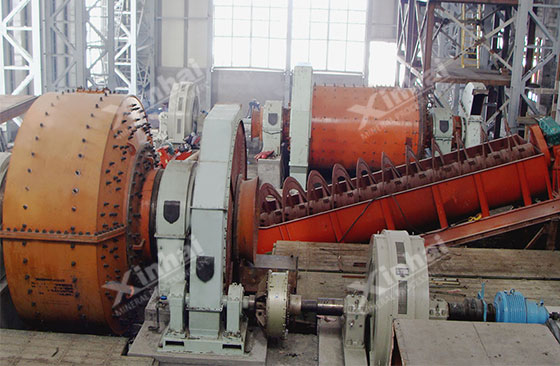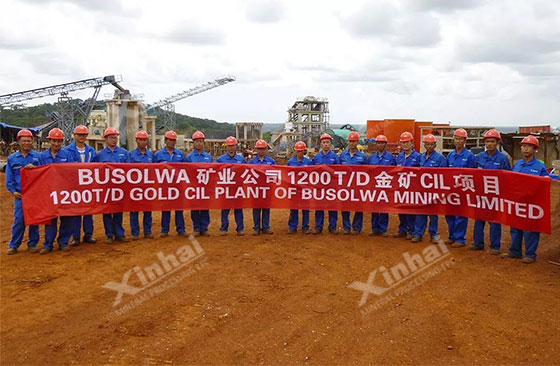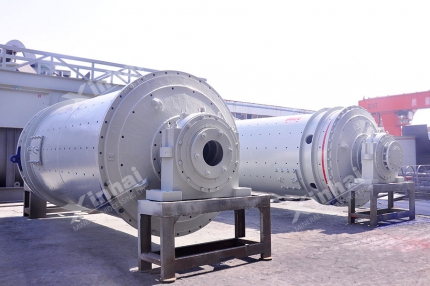As we all know, mineral processing operation consists with three stages, before processing, during processing, and after processing. The prepare before processing mainly includes crushing and screening, grinding and classification, hand sorting and washing. Among them, grinding and classification is an important process as the follow-up process of crushing and screening. The ore particle size is grinded to a certain degree of fineness by a ball mill, and the qualified and unqualified products are separated by use of classifying equipment, thus the whole pre-processing operation is completed. Then, in the production practice, how should we choose a reasonable grinding grading process and grinding grading process number of stages?
Use the table of contents below to navigate through the guide:
01How to choose grinding and classification processing correctly?
The reasonable grinding and classification process is determined mainly based on the following factors:
(1)Embedded features of useful minerals and gangue minerals;
(2)Hardness and density of useful ores and gangue;
(3)The degree of slime and oxidation of useful ores and gangue;
(4)The content and value of useful minerals in raw ore;
(5)Requirements of concentrate size in production practice.

02How to determine the section number of grinding and classification processing?
The number of grinding and classification sections is mainly determined by the size of the processing plant, the grindability of the ore, the grain size of the useful mineral crystals, the grain size of the ore feed and the grain size of the products. In general, when the upper limit of product granularity is greater than 0.15mm, a grinding classification process is adopted. When the upper limit of product granularity is less than 0.15mm, the two-stage grinding and classification process is usually adopted. Under special circumstances, when the ore size is large (the upper limit is more than 25mm), the ore is difficult to grind, the production scale is large, and the product size is coarse, the two-stage grinding and classification process can also be considered. If the ore is soft and easy to grind and the production scale is not large, although the upper limit of product particle size is less than 0.15mm, a grinding and classification process can also be adopted.

The grinding mill and classifier are used together to form the whole grinding and classification process. The number of grinding sections can be determined by technical and economic comparison according to specific conditions. In the production practice, most concentrators usually adopt a stage or two stage grinding grading process. The classification process of three and above three stages is seldom used.
03What are the common one-stage grinding and classification?
The commonly used one-stage grinding and classification process mainly includes the following three forms:
(1)A closed-circuit grinding process containing only inspection and grading is currently widely used in nonferrous and ferrous metal processing plants.
(2)A closed - circuit grinding process combining pre-classification and inspection classification.
(3)A closed - circuit grinding process with control grading. Generally divided into two categories, one is the overflow control grading, suitable for the first stage grinding to get very fine products, or stage sorting, or to use hydrocyclone grading, need to remove the coarse particles in the mechanical classifier; The second is the sand return control classification, the purpose is to reduce the content of qualified products in the sand return, to prevent overgrinding.

04What are the common two-stage grinding and classification?
The commonly used two-stage grinding classification process mainly includes the following three forms:
(1)The two-stage and closed-circuit grinding classification process is suitable for processing plants with large feeding size and large production scale.
(2)The two-stage and two-closed-circuit grinding classification process is often used in large and medium-sized processing plants whose product size is less than 0.15mm.
(3)The two-stage closed-circuit grinding classification process is applicable to the situation where a considerable amount of useful minerals in the first stage of grinding products have reached monomer dissociation, which can reduce grinding costs and improve metal recovery.

Compared with two-stage grinding and classification, one-stage grinding and classification process has fewer classifiers and lower costs. Easy production operation, simple regulation, no intermediate product transport between sections and sections. The multi-series mill can be placed on the same level, simple equipment configuration, not affect the work of another section of the mill because of one section of the mill or classifier shutdown, and shutdown loss is small.
In the practice of mill dressing, the determination of grinding classification process needs to take into account ore property, operation requirements, production conditions, investment budget and other factors. It is suggested that a qualified ore dressing test institution should be entrusted to carry out the test research before the construction of the dressing plant, and the reasonable grinding classification process should be determined according to the scientific test results, so as to achieve greater economic benefits.
05Xinhai Mining - Mineral Processing EPC+M+O Project
1.Guinea 6000tpd gold processing project

2.Pakistan 1500tpd copper processing project

3.Armenia 1500tpd copper-lead-zinc processing project

4.Tanzania 1200tpd gold processing project

5.Gansu China 1000tpd gold processing project



 marketing@ytxinhai.com
marketing@ytxinhai.com  0086 13810327080
0086 13810327080 






































































































 CHAT
CHAT MESSAGE
MESSAGE








.jpg)


